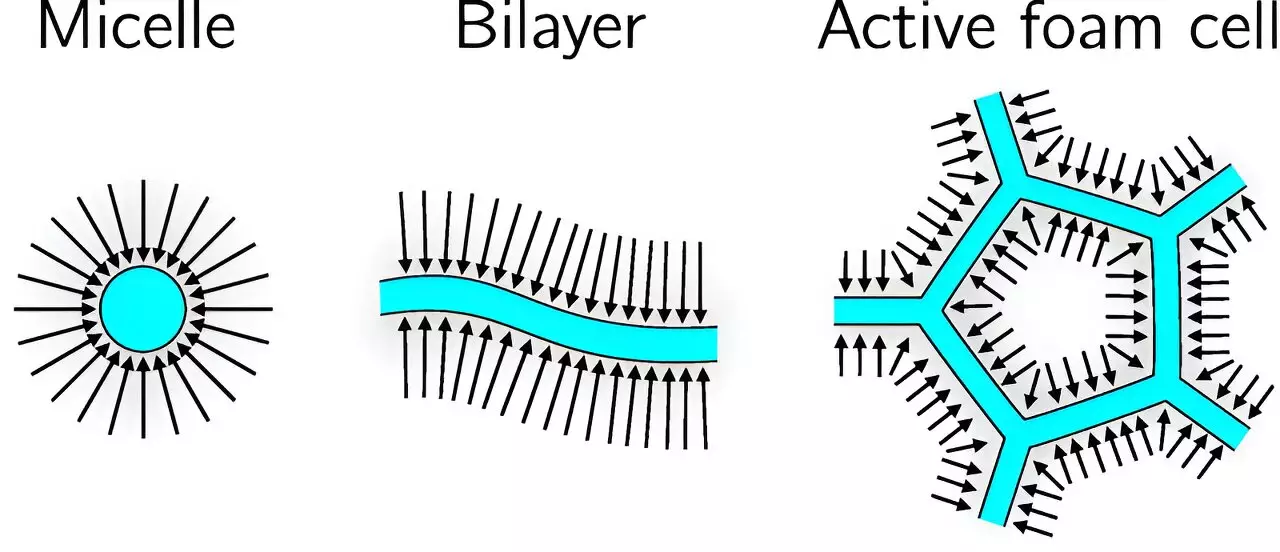The concept of self-organization plays a crucial role in both fundamental processes of life and their synthetic counterparts in nanotechnology. Professor Erwin Frey, a physicist at LMU Munich, has been delving into the fundamental principles behind this self-organization. His recent work, published in Physical Review X, focuses on the formation of patterns such as active foams from a combination of protein filaments and molecular motors.
Protein filaments, such as microtubules, and molecular motors are essential building blocks of the cytoskeleton in various types of cells. The interaction between these filaments and motors is key to the construction and rebuilding of cellular structures, such as the mitotic spindle responsible for correct cell division. Studies at the University of California, Santa Barbara have shown that diverse structures can emerge from the dynamic interplay between microtubules and molecular motors, including aster-like micelles and a unique phase called active foam.
The active foam is a fascinating structure that arises when the number of microtubules is increased. Microtubule bilayers, with filaments pointing in opposite directions, form the basic building blocks of this foam. These bilayers come together to create a network that undergoes continuous rearrangements, resulting in a pattern resembling a mixture of pentagons, hexagons, and heptagons reminiscent of honeycombs. However, unlike honeycombs, active foams have the unique ability to repeatedly rearrange themselves.
Professor Frey and his team developed a mathematical model to explain the formation of these intricate patterns. Through numerical simulations, they were able to replicate the patterns observed in experiments and understand the transition from micelles to active foam based on the density of microtubules. The interaction between motors and microtubules is crucial for creating the organized structure necessary for complex cellular patterns.
The insights gained from this research have far-reaching implications, not only in understanding the fundamental processes of self-organization in biological systems but also in advancing bionanotechnological applications. The theoretical model developed by Professor Frey and his team could pave the way for innovative approaches in utilizing active matter for various technological advancements in the future.
The study of pattern formation in biological physics provides a deeper understanding of the intricate mechanisms at play in self-organizing systems. By unraveling the complexities of how protein filaments and molecular motors interact to form structures like active foams, researchers are opening up new possibilities for harnessing these processes in both biological and technological applications.


Leave a Reply